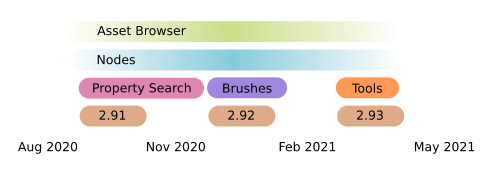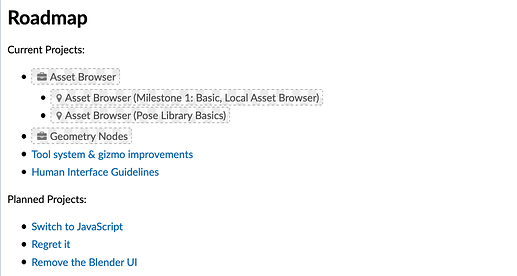Hi all,
Currently all modules have a roadmap image in the project description on developer.blender.org. For example, here’s the one from the UI module:

I’d suggest removing them (in favor of the proposal below) for the following reasons:
- Purpose of the short, 3 month release cycle was to make work more project target, less release target focused. Project targets should be merged once ready, not rushed to make a “deadline” (even if a rather soft one). There’s always the next release wagon around the corner.
Asking modules to create pictures with release targets does exactly the opposite of that. - The images give minimal info. It’s not clear where to get further information, there are no explanations given. You end up making compromises on the content for a visually appealing(-ish) result.
- We haven’t done a good job at updating them regularly. No module updated theirs after the 2.91 release, about half of them weren’t updated since before 2.90.
Sure, maybe some butts should be kicked, but apparently modules don’t find this important or useful enough to pay attention to it. - Having to update the SVG is a bit of a hassle. It’s not a big deal, but something that takes some effort to do, while it doesn’t feel like having a clear benefit to the module, will always tend to get lost in the existing mountains of things to be done.
Proposal
Make the roadmap project target based (not release target). A simple list of project names with a link goes a long way. E.g.:
There could be a status indication too (e.g. how close it’s to being shipped). But the project description should mention that anyway:
Think this solves all mentioned issues just fine.


 BI/BF is the best conduct to maintain the best possible communication.
BI/BF is the best conduct to maintain the best possible communication.